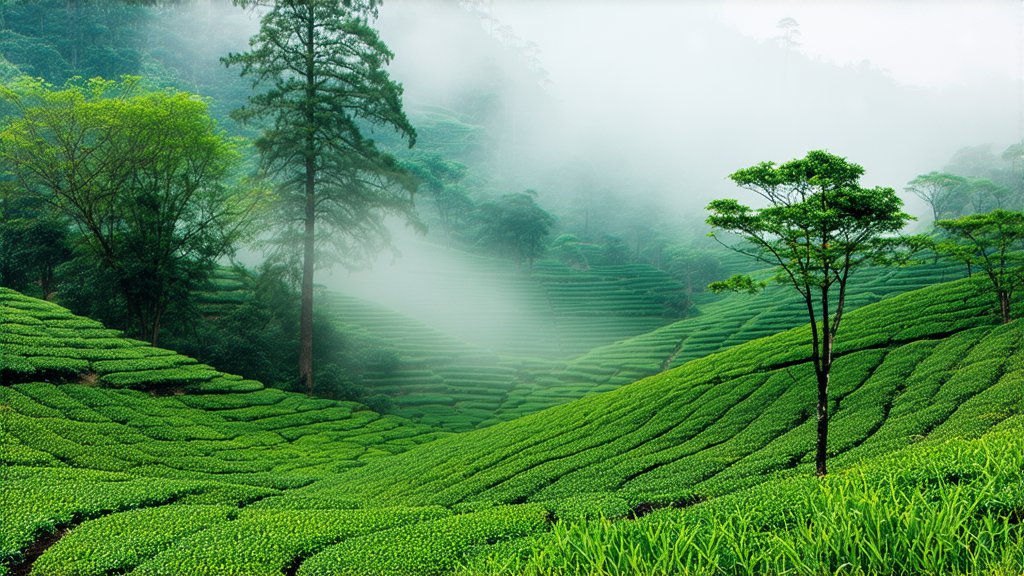
In the vast tapestry of global tea cultures, few varieties hold as revered a place as Tieguanyin, a quintessential representation of Chinese oolong tea. This exquisite beverage, hailing from the verdant hills of Anxi County in Fujian Province, China, is not merely a drink but an experience steeped in centuries-old tradition, meticulous craftsmanship, and a flavor profile that has captivated tea connoisseurs worldwide.
Historical Roots and Evolution
The story of Tieguanyin begins in the early Qing Dynasty, around the 18th century. Legend has it that the tea was discovered by a poor scholar named Wang who stumbled upon a wild tea tree growing on a rocky cliff. He propagated cuttings from this tree, which eventually led to the cultivation of what we now know as Tieguanyin. Its name, translating to "Iron Buddha," pays homage to the statue of Guanyin, the Bodhisattva of Compassion, found near its place of discovery. Over time, Tieguanyin evolved from a local curiosity into a globally recognized symbol of Chinese tea artistry.
Varieties and Classification
Tieguanyin falls under the broad category of oolong teas, occupying a unique position between green and black teas due to its partial oxidation process. Within the realm of Tieguanyin, there are several sub-varieties, each with distinct characteristics influenced by factors such as altitude, soil composition, and processing techniques. The most celebrated among them include Xiang (Fragrant) Tieguanyin, known for its floral aroma, and Yancha (Rock Tea), which boasts a mineral taste attributed to the rocky terrain it grows on.
The Craft of Tieguanyin Production
The journey from leaf to cup for Tieguanyin is an intricate dance of nature and human skill. Harvesting typically occurs in spring and autumn when the leaves are at their freshest and most flavorful. The process starts with careful handpicking of mature leaves, ensuring only the top two or three leaves and a bud are selected. These undergo a series of steps: withering under the sun to soften the leaves, tossing and turning to bruise them slightly and initiate oxidation, followed by shaping through rolling to form tight pellets. Afterwards, the leaves are roasted over charcoal fires, imparting a distinctive smokiness and fixing the flavors. Finally, they are dried to perfection, ready to be brewed.
A Symphony of Flavors: The Gongfu Tea Ceremony
To truly appreciate Tieguanyin, one must engage in the Gongfu tea ceremony, a ritualistic practice that elevates tea drinking into an art form. The ceremony emphasizes precision, mindfulness, and respect for the tea. Begin by warming the teapot and cups with hot water to enhance the aroma. Measure approximately 5 grams of Tieguanyin per 150ml of water. Rinse the leaves briefly with boiling water to awaken their flavors before discarding this initial infusion. For subsequent steepings, pour hot water (around 90°C) over the leaves and let them infuse for about 20-30 seconds for the first brew, gradually increasing the duration for later infusions. Observe the transformation of the leaves as they unfurl, releasing their complex bouquet of floral, fruity, and roasted notes. Savor each sip slowly, allowing the tea's nuances to unfold on your palate.
Tasting Notes and Appreciation
Tieguanyin is renowned for its multifaceted flavor profile. Depending on its variety and processing, it can exhibit a symphony of tastes ranging from sweet orchid and ripe fruit to creamy caramel and earthy minerals. The aftertaste is long-lasting, often accompanied by a cooling sensation in the throat, a hallmark of high-quality oolongs. To fully appreciate these subtleties, one must approach tasting with all senses engaged—visually observing the tea's color, audibly listening to the water's gentle pour, olfactorily inhaling the steam rising from the cup, gustatorily savoring the flavors, and tactilely feeling the warmth of the porcelain in hand.
In conclusion, Tieguanyin stands as a testament to China’s rich tea heritage and the profound impact of geography, climate, and human ingenuity on the creation of extraordinary beverages. Whether you are a seasoned tea enthusiast or a curious novice, embarking on a journey with Tieguanyin promises an unforgettable exploration of flavors, traditions, and the art of living mindfully. Embrace the opportunity to connect with centuries-old practices and discover why this iron goddess of oolong continues to enchant the world stage.